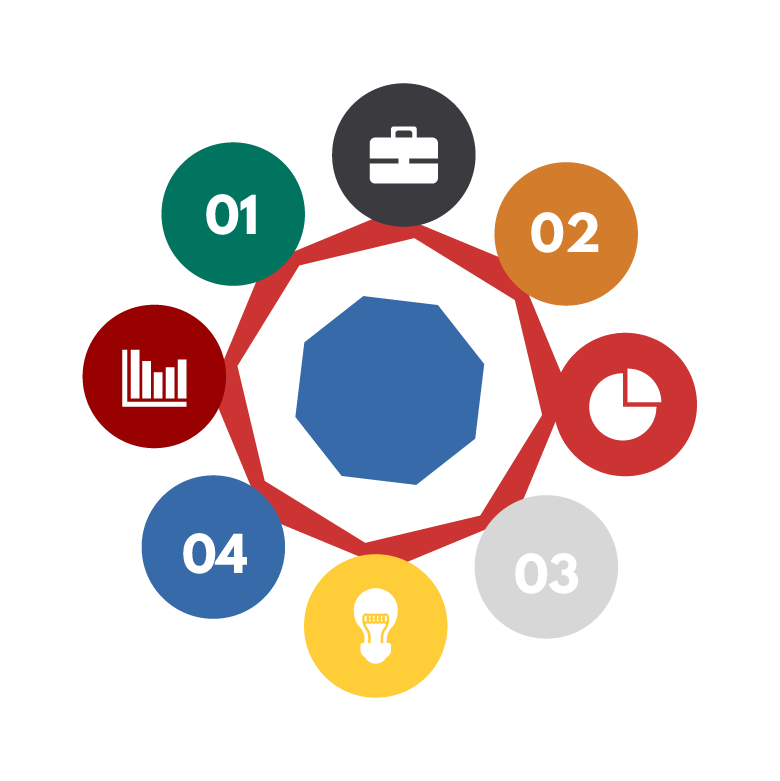DATA GOVERNANCE: TURNING YOUR DATA INTO PRODUCTS

UNDERSTANDING, MANAGING, QUALIFYING, AND SHARING
Businesses are organized around functions and departments, each one with dedicated applications. Data has emerged as a transversal asset, with a management dimension aimed at understanding and serving broader objectives. A new department, under the responsibility of the Chief Data Officer (CDO), has been created with the goal of scaling data analysis to new levels. Data-centric logic, based on platforms, has have been implemented to prepare and leverage data, dividing it into along different domains.
Know your data to set goals and grow.
Empower stakeholders around roles and commitments for the benefit of a common goal.
Master the value of data in support of CX and compliance.
In this context, governance has become an essential element, involving a broad spectrum of company stakeholders:
- Any analysis is only relevant if the data is available, recent, rich, and reliable.
- A corporate strategy must be based on a shared vision, supported by widely available and operational metadata.
- The data mesh logic holds each department or service accountable, beyond the optimization of their own business applications.
However, companies struggle to understand and implement a good governance. It must rely on a mix of diverse, cross-functional skills, where the understanding of business issues leads to expertises in analysis, modeling, and application processes. The organization relies on a clear definition of roles and its evolution can be supported by a change management approach.
Effective governance, coupled with suitable application architectures, enables the company to achieve operational efficiency and ensures successful internal and external user experiences. This performance serves the development of short- and medium-term ambitions.
In this context, governance has become an essential element, involving a broad spectrum of company stakeholders:
- Any analysis is only relevant if the data is available, recent, rich, and reliable.
- A corporate strategy must be based on a shared vision, supported by widely available and operational metadata.
- The data mesh logic holds each department or service accountable, beyond the optimization of their own business applications.
However, companies struggle to understand and implement a good governance. It must rely on a mix of diverse, cross-functional skills, where the understanding of business issues leads to expertises in analysis, modeling, and application processes. The organization relies on a clear definition of roles and its evolution can be supported by a change management approach.
Effective governance, coupled with suitable application architectures, enables the company to achieve operational efficiency and ensures successful internal and external user experiences. This performance serves the development of short- and medium-term ambitions.
UNDERSTANDING YOUR DATA
Business actors have operational knowledge of their data, tied to the pain points they encounter or actions they are unable to execute fully or qualitatively. A Business Analyst must engage with these actors and rely on data profiling of databases and data files. This analysis has a dual purpose: to assess data quality and define an action plan to address critical issues, while understanding the underlying models for each activity to project into an overall vision.
Understanding business objects, their metadata, and their relationships is a crucial step in building a personalized and shared vision. A structured data catalog with a dedicated tool allows for formalizing this vision and sharing common concepts and vocabulary. This process can be completed by modeling business objects within a Master Data Management (MDM) system.
It’s important to note the links between these different challenges: data discovery, normalization, cataloging, flow mapping, and data quality improvement. Platforms are designed to group this way, within the same user interface, shares services meeting these requirements.
GOVERNING DATA
Data governance here refers to the definition of an organization and roles: Data Owner, Product Owner, Data Stewards, Key users, etc. These roles must formally exist to hold individuals accountable for the quality, integrity, and uniqueness of the data and enable the establishment of virtuous processes within a continuous improvement approach.
The implementation of this organization relies on at least two types of expertise:
- Technical expertise: From data analysis, cataloging, and modeling to defining processes and a data lifecycle that supports governance.
- Change management: Supporting the engagement of stakeholders in their new roles and functions by clearly defining missions, addressing concerns, and fostering strong buy-in.
MANAGING THE DATA LIFECYCLE
Data lifecycle management is based on an application architecture aligned with the organization to ensure operational efficiency while remaining flexible in the face of changing business scopes or ambitions. Data knowledge, formalization, and sharing, along with the implementation of operational governance, should guide the optimization of data flows: Who is responsible? Which applications are interfacing with each other? Who and which applications hold the truth? What tools should be used to share data? How can flows be simplified and monitored?
This comprehensive and cross-functional approach must address current needs while anticipating future ambitions. Governance, therefore, takes on a more strategic role, combining IT architecture and business needs. Business Analysts collaborate with flow and architecture experts to develop together the best solutions, balancing performance and cost optimization.
REGULATORY REQUIREMENTS GOVERNANCE
Business applications generally do not meet most regulatory requirements (GDPR, ESG, etc.):
- They do not collect all the required data.
- They do not offer the necessary functionalities.
Data-centric platforms, particularly MDMs, can fulfill this role. This involves creating dedicated objects (e.g., consents), modeling them according to regulatory requirements, personalizing them to the company’s context, and then sharing them with all relevant applications and/or through digital interfaces. Moreover, the company must be able to manage these data manually to handle specific requests.
This is indeed a specific governance approach.




